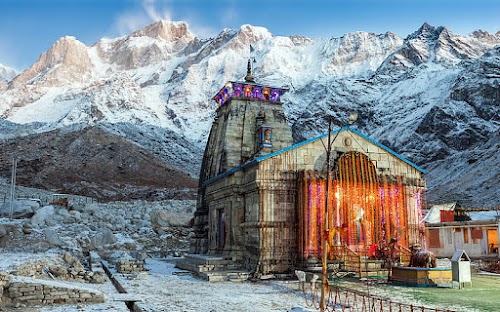
Shri Kedarnath Jyotirlinga Temple
Kedarnath, India
- Attend the morning aarti ceremony
- Capture the scenic Himalayan views
- Meditate in the serene surroundings
- Offer prayers to Lord Shiva
- Trek to Vasuki Tal
- Visit the Bhairavnath Temple
Known for:
Description:
Nestled amidst the majestic Garhwal Himalayan range in Uttarakhand, India, the Kedarnath Temple is a revered Hindu shrine dedicated to Lord Shiva. As one of the twelve Jyotirlingas, it holds immense religious significance. The temple's stunning location, at an altitude of 3,583 meters (11,755 feet) near the Chorabari Glacier and the Mandakini River, adds to its spiritual aura. Pilgrims undertake a challenging trek to reach the temple, which is typically open from late April or early May to November, depending on weather conditions. The ancient stone structure, with its conical peak and intricate carvings, stands as a testament to faith and architectural prowess. The serene environment and the chanting of prayers create a deeply moving and unforgettable experience for devotees and travelers alike.
History:
The history of Kedarnath Temple is shrouded in legends and antiquity. It is believed to have been originally built by the Pandavas from the Mahabharata epic, seeking atonement for their sins after the Kurukshetra war. Legend says they were advised by Lord Shiva himself to build a temple here. The current structure is attributed to Adi Shankaracharya, the 8th-century philosopher and saint, who is said to have restored the temple. Over centuries, the temple has faced natural calamities and has been rebuilt several times. The devastating floods of 2013 caused significant damage, but the temple miraculously survived, further strengthening the faith of devotees. The temple's resilience and enduring spiritual significance continue to draw pilgrims from across the globe.